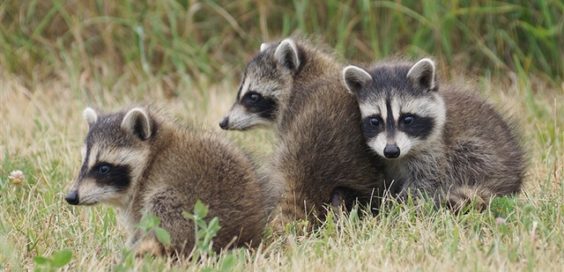
Creature Feature – Raccoons
Posted by Dustin Horton // May 6, 2019 // Articles, Creature Feature
Raccoons are one of the most easily recognized mammals. Some folks find them adorable; others feel they’re a nuisance. Either way, these masked creatures are intelligent and adaptable. They’re primarily nocturnal and spend lots of time foraging for food. Dexterous front paws with long “fingers” enable them to grab frogs, crayfish and other prey. Raccoons are omnivorous, so they also eat fruits and plants. Here in NY, raccoons pack on fat during the warmer months. Over the winter, they snooze a lot inside their dens within tree cavities and hollow logs. In late spring, a mother raccoon bears young, called kits, within her den. They stay in the den for several weeks, then tag along with mom until fall, when they’ll strike out on their own. Raccoons can become problematic when we inadvertently provide food sources, like easily accessed garbage or outdoor pet bowls. They’re also attracted to structures offering shelter via accessible cavities. Raccoon-proofing can be challenging, because these clever animals can manipulate latches, doorknobs and even jar lids. It’s illegal to keep a raccoon as a pet, and it’s not wise to feed them. Raccoon rabies reached NY in 1990 and has become widespread. A raccoon infected with rabies or distemper may act tame or aggressive, appear uncoordinated, salivate excessively or drag its hind legs. If you suspect a raccoon may be rabid, keep your distance and contact local health officials. It’s a myth that any raccoon active in the daytime is sick; they may forage in daylight, especially mothers.
Article and Photo by Margie Manthey













